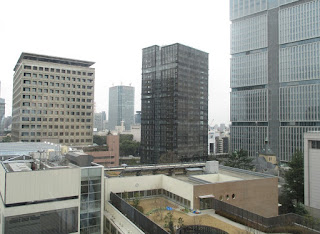Shizuoka
City has various historical spots and places of good view. I walked the
hillside ways from Kusanagi Shrine through Nihondaira to Kunozan.
Kusanagi
Shrine was built to enshrine Prince Yamato Takeru, a hero of ancient Japan. It
is at the foot of hilly area. The statue of Yamato Takeru stood at the
entrance.
The first gate locates about 1 kilometer from the shrine.
I
moved up the mountainous road and arrived at Nihondaira. It is a plateau at the
top of Mt. Udo. It is about 300 meter high.
People
can enjoy the landscape of Mr. Fuji from here. It was unfortunately cloudy
today and I could not see Mt. Fuji. There many tea fields on the side of the
mountain.
I
took the Nihondaira Ropeway which connects Nihondaira and Kunozan Toshogu
Shrine in about 10 minutes. The shrine stood on the top of Mt. Kuno. (See also the seconf photo from the top).
It
enshrines Tokugawa Ieyasu, the founder of the Tokugawa government in the early
17 century. The building is a national treasure. There were many tourists
there.
There
spread the Suruga Bay under the mountain. There are many vinyl plastic hothouses to cultivate strawberry and other fruits and vegetables.
A long stone-made stair links the
shrine and the coastal area. It was pleasant to walk down the stair. (See the top photo).


































